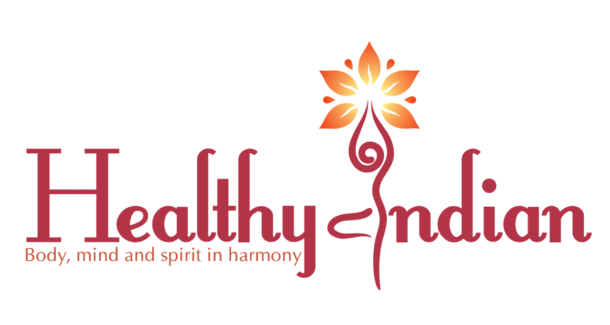If your happiness could use a boost this year commit to cultivating an attitude of gratitude – every day. Gratitude not only paves the way to life satisfaction, but research has also demonstrated it is the single best predictor of good relationships, and benefits both sanity and physical health. Enhancing your well-being, then, may be as simple as taking the time each day to reflect on what you’re thankful for.
The Many Health Benefits of Gratitude
Aside from augmenting happiness and life satisfaction, gratitude also produces measurable effects on a number of bodily systems, including beneficial effects on mood and pleasure-related neurotransmitters, reproductive and social bonding hormones, cognition, blood pressure and more. Importantly, it lowers the stress hormone cortisol and inflammatory cytokines, which are often elevated if you have chronic disease. Health benefits associated with gratitude include:
- A greater sense of pleasure, as gratitude stimulates your hypothalamus (a brain area involved in the regulation of stress) and your ventral tegmental area (part of your brain’s “reward circuitry,” an area that produces pleasurable feelings)
- Improved sleep (especially if your mind has a tendency to go into overdrive with negative thoughts and worries at bedtime)
- A higher likelihood of engaging in other healthy activities and self-care such as exercise
- Higher relationship satisfaction
- Improved work performance (in one study, managers who expressed gratitude saw a 50 percent increase in the employees’ performance)
- Reduced stress and emotional distress, in part by improving emotional resiliency
- Enhanced well-being and improved mental health by triggering the release of antidepressant and mood-regulating chemicals such as serotonin, dopamine, norepinephrine and oxytocin, while inhibiting cortisol
- Improved heart health, reducing the likelihood of sudden death in patients with congestive heart failure and coronary artery disease
- Reduced inflammation and pain
- Improved immune function
A Dozen Practical Strategies to Build and Strengthen Gratitude
Following are a diverse array of practices, recommended by various experts and researchers, that can boost your gratitude quotient. Pick one or more that appeal to you, and make a point to work it into your daily or weekly schedule. If you like, conduct your own little experiment:
Write down your current level of happiness and life satisfaction on a piece of paper or your annual calendar, using a rating system of zero to 10. Every three months or so (provided you’ve actually been doing your gratitude exercise), re-evaluate and re-rank yourself.
Keep a Gratitude Journal
Each day, or on set days each week, write down everything you’re grateful for, and make an effort to really feel the positivity. While you can certainly buy a nice diary specifically for this purpose, you could simply make a notation in your daily calendar. Alternatively, download a Gratitude Journal app from iTunes.
Focus on the benevolence of other people. Doing so will increase your sense of being supported by life and decrease unnecessary anxiety. Also, focus on what you have received rather than what’s been withheld. “The ‘surplus’ mode will increase our feelings of worth; the ‘deficit’ mode will lead us to think how incomplete our life is.
Lastly, avoid comparing yourself to people you perceive to have more advantages. Doing so will only erode your sense of security.
Write Thank-You Notes
When thanking someone who has done something for you, whether large or small, be specific, comment on the effort it has taken, and the cost, and keep the focus on that person. For example, ‘Thank you for bringing me my tea in bed. I really appreciate you getting up early each day. You’re so thoughtful.’ The key to effectiveness is to achieve some separation between the kind act and your expression.
This year, make it a point to write thank-you notes or letters in response to each gift or kind act — or simply as a show of gratitude for someone being in your life. To get you started, consider practicing mindful thank yous for seven days straight.
Say Grace at Each Meal
Adopting the ritual of saying grace at each meal is a great way to flex your gratitude muscle on a daily basis, and will also foster a deeper connection to your food. While this can be a perfect opportunity to honor a spiritual connection with the divine, you don’t have to turn it into a religious speech if you don’t want to.
You could simply say, “I am grateful for this food, and appreciate all the time and hard work that went into its production, transportation and preparation.”
Let Go of Negativity by Changing Your Perception
Since stress is virtually unavoidable, the key is to develop and strengthen your ability to manage your stress so that it doesn’t wear you down over time. Rather than dwelling on negative events, most centenarians figured out how to let things go, and you can do that too. It takes practice though. It’s a skill that must be honed daily, or however often you’re triggered.
A foundational principle to let go of negativity is the realization that the way you feel has little to do with the event itself, and everything to do with your perception of it. Wisdom of the ancients dictate that events are neither good nor bad in and of themselves. It is your belief about the event that upsets you, not the fact that it happened.
Listen to Your Own Advice
Another potent technique that can increase your positive-to-negative emotion ratio is to ask yourself, “What would I recommend if this happened to someone else?” and then follow your own advice.
We’re distanced emotionally from an event that happens to someone else, and that distance allows us to make saner, more reasonable decisions.
Be Mindful of Your Nonverbal Actions
Smiling and hugging are both ways of expressing gratitude, encouragement, excitement, empathy and support. These physical actions also help strengthen your inner experience of positive emotions.
Give Praise
Research shows that using “other-praising” phrases are far more effective than “self-beneficial” phrases. For example, praising a partner saying, “thank you for going out of your way to do this,” is more powerful than a compliment framed in terms of how you benefited, such as “it makes me happy when you do that.” Also, be mindful of your delivery — say it like you mean it. Establishing eye contact is another tactic that helps you show your sincerity.
Prayer and/or Mindfulness Meditation
Expressing thanks during prayer or meditation is another way to cultivate gratitude. Practicing “mindfulness” means that you’re actively paying attention to the moment you’re in right now. A mantra is sometimes used to help maintain focus, but you can also focus on something that you’re grateful for, such as a pleasant smell, a cool breeze or a lovely memory.
Create a Nightly Gratitude Ritual
One suggestion is to create a gratitude jar, into which the entire family can add notes of gratitude on a daily basis. Any jar or container will do. Simply write a quick note on a small slip of paper and put it into the jar. Some make an annual (or biannual or even monthly) event out of going through the whole jar, reading each slip out loud.
If you have young children, a lovely ritual suggested by Dr. Alison Chen in a Huffington Post article is to create a bedtime routine that involves stating what you’re grateful for out loud.
Spend Money on Activities Instead of Things
According to recent research, spending money on experiences not only generates more gratitude than material consumption, it also motivates greater generosity. As noted by co-author Amit Kumar, postdoctoral research fellow at the University of Chicago, “People feel fortunate, and because it’s a diffuse, untargeted type of gratitude, they’re motivated to give back to people in general.”
Embrace the Idea of Having “Enough”
Many who have adopted the minimalist lifestyle claim they’ve been able to reduce the amount of time they have to work to pay their bills, freeing up time for volunteer work, creative pursuits and taking care of their personal health, thereby dramatically raising their happiness and life satisfaction.
The key here is deciding what “enough” is. Consumption itself is not the problem; unchecked and unnecessary shopping is.
It’s like being on a hamster wheel – you keep shopping, thinking happiness and life satisfaction will come with it. Yet it never does. Many times, accumulation of material goods is a symptom that you may be trying to fill a void in your life, yet that void can never be filled by material things.
More often than not, the void is silently asking for more love, personal connection, or experiences that bring purpose and passionate engagement. Try to identify your real, authentic emotional and spiritual needs, and then focus on fulfilling them in ways that does not involve shopping. Read our blog on decluttering here.
Try Tapping
The Emotional Freedom Techniques (EFT) is a helpful tool for a number of emotional challenges, including lack of gratitude. EFT is a form of psychological acupressure based on the energy meridians used in acupuncture that can quickly restore inner balance and healing, and helps rid your mind of negative thoughts and emotions.
The key is to stay consistent. Find a way to incorporate your chosen method into each week; ideally each day, and stick with it. Place a reminder note on your bathroom mirror if you need to, or schedule it into your calendar along with all of your other important to-dos.
If you loved reading this blog, check out The Rules of Simple Living.
For the unabridged article, click here.


